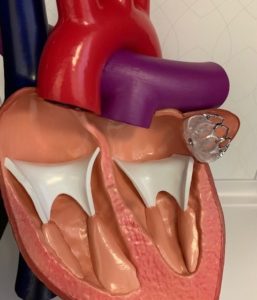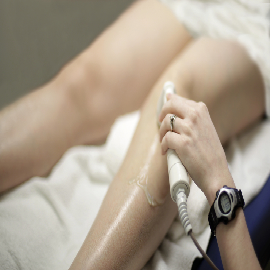Watchman Procedure

If you have been diagnosed with atrial fibrillation, you may be at an increased risk of stroke. With that in mind, taking preventive measures to avoid a stroke event is obviously desirable, and the use of a Watchman Device is one option for many patients. Those with atrial fibrillation would be wise to at least discuss the possibility of using a Watchman Device with their doctor to learn more about this treatment strategy.
A Different Approach
For many people with atrial fibrillation (not caused by a heart valve problem), the treatment plan involves taking a drug known as warfarin. While taking warfarin has proven to be effective in terms of reducing the chances of a stroke, there are side effects that come along with taking blood thinners. Specifically, there is a risk of significant bleeding when on blood thinners, and such bleeding can be extremely dangerous.
It’s obvious that a treatment option which doesn’t involve blood thinners but does reduce the risk of stroke would be welcome, and the Watchman Device is one such approach. If you wind up being a good candidate for this treatment, you could potentially get away from warfarin while still protecting against stroke. Rather than using a drug, the Watchman Device offers an implant solution that works to stop blood clots from escaping your heart and leading to a stroke at some point in the future.
How It Works
To understand how the Watchman Device works, you need to understand some basics regarding the functioning of your heart. Within the heart, there is an area known as the left atrial appendage. This portion of the heart is a common place for blood clots to form in those with atrial fibrillation. If a blood clot does form in the left atrial appendage, it may escape the heart at some point, traveling elsewhere in the body. At that point, it’s possible that the clot will cut off the supply of blood to the brain, leading to a stroke. For those who do have a stroke that is related to atrial fibrillation, it’s common that the blood clot started in the left atrial appendage.
The Watchman Device takes away this risk by permanently closing off the left atrial appendage. If this part of the heart is closed off, clots will not be able to escape – and the risk of stroke will be significantly reduced. Standard medical materials are used to produce this lightweight device which will need to be surgically implanted during a one-time procedure. There are risks associated with the procedure, as is always the case with invasive procedures, so opting for a Watchman Device should only be considered by those who are not doing well with traditional blood thinning treatment.
The Procedure and Recovery
If you are familiar with how a stent is placed in the heart, the implantation of a Watchman Device is very similar. An incision will be made in the upper leg and the device will be moved through a tube up to your heart. Once in place, the device will simply need time to be incorporated into your heart, as tissue will begin to grow over the implant and create the blood clot barrier that is desired. As long as there are no unexpected complications as part of the procedure, you should be able to stay just a single night in the hospital before returning home.
It’s important to note that patients who undergo this procedure will need to keep taking blood thinners for at least 45 days after the implant is placed. Your doctor will monitor the progress of the implant using imaging to determine if and when you can discontinue the use of your warfarin or other blood thinning medication. Most patients are able to stop taking warfarin after the 45-day window has passed, but each case is unique.
Are You a Candidate?
Obviously, with a procedure as serious as one that places an implant in your heart, qualifying patients for this treatment is not taken lightly. There will need to be a variety of tests performed before a patient can be deemed eligible for the Watchman Device, and you’ll need to talk over all of the benefits and risks with your doctor.
For starters, those who are not currently responding well to blood thinning treatments may be pointed in this direction. If blood thinners are working well and are expected to serve a patient well into the future, there is no reason to take on the risks associated with invasive treatments. In other words, there needs to be a medical reason to look toward an alternative option.
The patient will also need to be in good enough health to undergo this procedure with every expectation of coming out on the other side in good condition. If the operation is seen as too risky based on the patient’s health at the moment, it will not be performed. Ultimately, communication with your doctor is going to be the key piece of the puzzle while determining if you qualify for a Watchman Device. It’s not enough to know that you have atrial fibrillation not cause by a heart valve problem. That’s a start, but it’s not the end of the story. You’ll need to qualify for other reasons as well, and the only way to determine whether or not that is the case is to work closely with your doctor right from the start.



